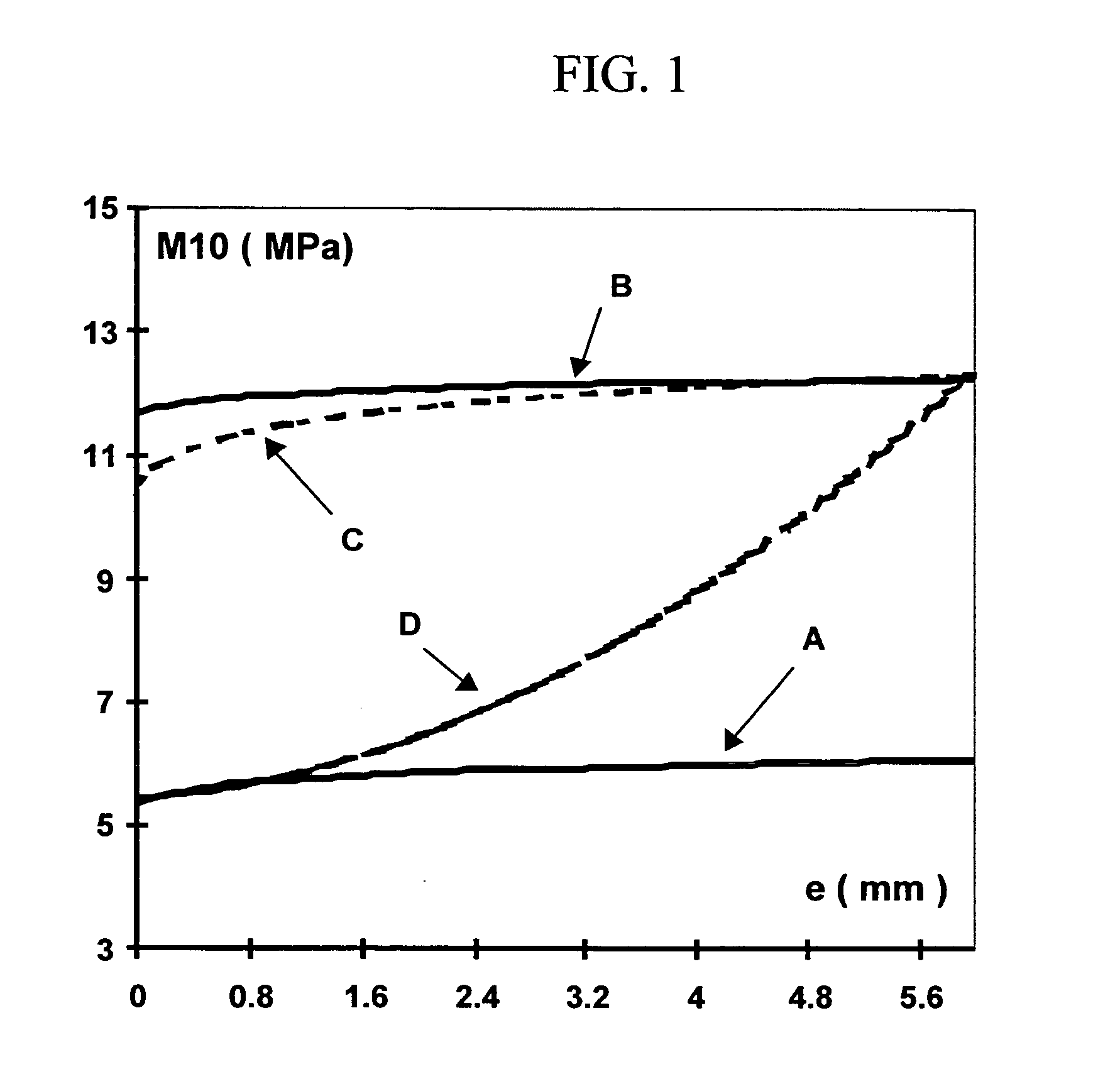Tread for a tire
a technology applied in the field of elastomers and treads for tires, can solve the problems of increasing production costs, complex manufacturing of composite treads, and increasing complexity of composite treads
- Summary
- Abstract
- Description
- Claims
- Application Information
AI Technical Summary
Benefits of technology
Problems solved by technology
Method used
Image
Examples
examples
[0147] Preparation of the rubber compositions and treads. For the following tests, the procedure is as follows: the reinforcing filler, the coupling agent and any associated coupling activator, the diene elastomer or the mixture of diene elastomers, the methylene acceptor and the various other ingredients, with the exception of the vulcanization system and the methylene donor, are introduced in succession into an internal mixer filled to 70% of capacity, the initial tank temperature of which is approximately 60° C. Thermomechanical working (non-productive phase) is then performed in one stage, of a duration of about 3 to 4 minutes in total, until a maximum “dropping” temperature of 165° C. is obtained. In these tests, the methylene acceptor is introduced into the mixer when the composition under kneading has reached a temperature close to 100° C.
[0148] The mixture thus obtained is recovered, it is cooled and then the sulphur, sulphenamide accelerator and methylene donor are incorpo...
PUM
| Property | Measurement | Unit |
|---|---|---|
| secant modulus | aaaaa | aaaaa |
| secant modulus | aaaaa | aaaaa |
| secant modulus | aaaaa | aaaaa |
Abstract
Description
Claims
Application Information
 Login to View More
Login to View More - R&D
- Intellectual Property
- Life Sciences
- Materials
- Tech Scout
- Unparalleled Data Quality
- Higher Quality Content
- 60% Fewer Hallucinations
Browse by: Latest US Patents, China's latest patents, Technical Efficacy Thesaurus, Application Domain, Technology Topic, Popular Technical Reports.
© 2025 PatSnap. All rights reserved.Legal|Privacy policy|Modern Slavery Act Transparency Statement|Sitemap|About US| Contact US: help@patsnap.com


